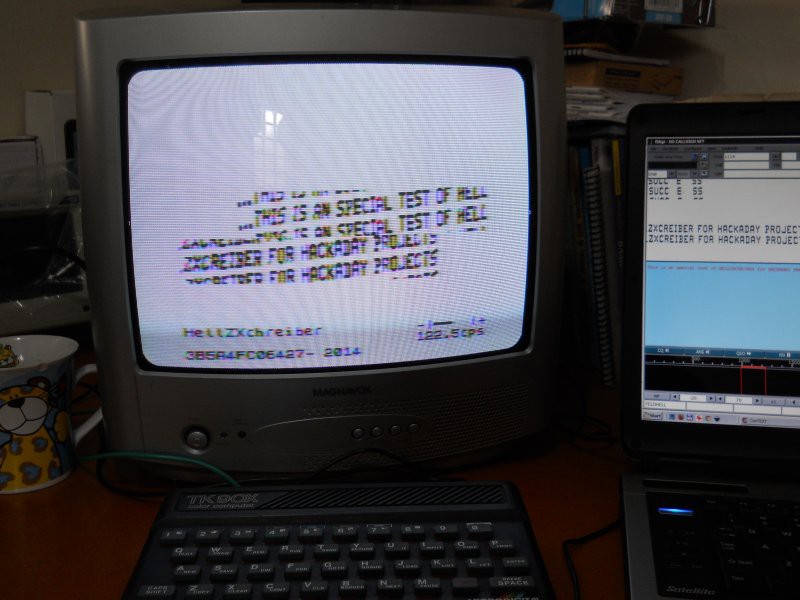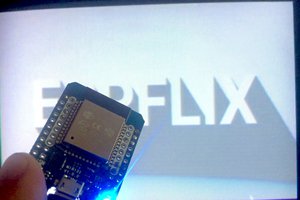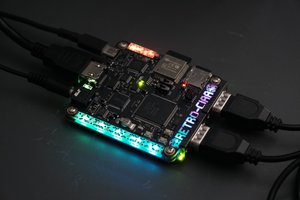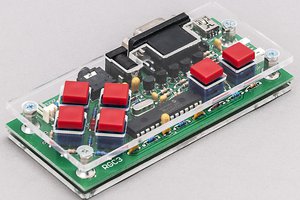The audio signal is input to the EAR socket of ZX spectrum.
Key controls:
- '9' changes reception speed preset (105, 122.5 and 245 baud)
- '5' tune down (decrease) reception speed
- '8' tune up (increase) reception speed
- '0' when pressed plots black pixels to check present rendering position
 danjovic
danjovic



 rossumur
rossumur
 Santiago Germino
Santiago Germino
 Voja Antonic
Voja Antonic
Nice! How about hell transmitter?